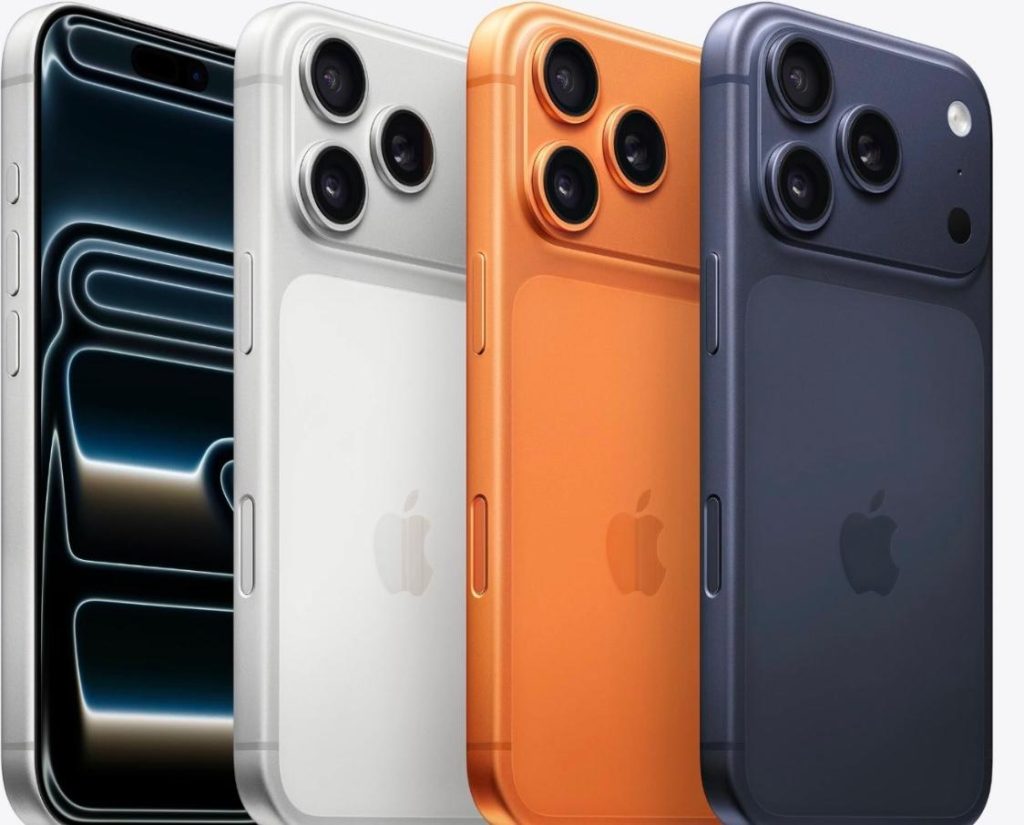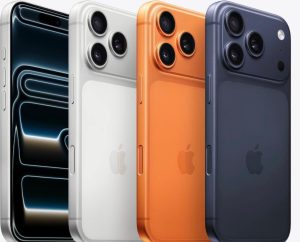Behind the Buzz: The Real Story Apple Doesn’t Tell About the iPhone 17 Pro Max

By Marilyn Ossai
iPhone 17 Pro Max: Hype, Habit, and the Unspoken Pressure to Upgrade
The moment Apple drops a new iPhone, the internet behaves like it’s witnessing a cosmic event. Timelines heat up, tech channels go into overdrive, and everyone suddenly becomes an expert on specs, chips, and camera sensors. The iPhone 17 Pro Max arrived with the same storm; excitement, arguments, memes, and of course, the age-old question: “Should I upgrade?”
For many people, this device feels like the future in a rectangular frame. For others, it’s just another expensive reminder that Apple knows how to keep its users on their toes. But beneath the shiny titanium finish and impressive camera specs lies a bigger conversation about Apple’s strategy, consumer habits, and the pressure that follows every new release.
What’s Actually New This Year
The iPhone 17 Pro Max does bring improvements – that’s one thing Apple never fails to deliver. But the question is whether these upgrades are truly game-changing or simply incremental.
Here’s what Apple packed into this year’s model:
A New Chip That Raises the Ceiling: The A19 Pro chip is faster, more efficient, and handles multitasking effortlessly. Apps open smoother, games run better, and the device barely heats up thanks to its refined thermal system.
The Camera Takes Another Leap: The triple-lens setup now gives sharper low-light performance, a more stable zoom, and colours that look closer to the real world. For photographers and content creators, it’s a noticeable boost.
A Design Built for Durability: Apple redesigned the internal structure for better shock resistance and improved battery health. The frame feels lighter yet tougher, and the new cooling system means the phone can take more intense use without getting warm.
Battery Improvements: This year’s model holds charge longer, especially during heavy tasks like video recording or gaming. The higher-capacity battery and more efficient chip combine to offer longer screen time.
Of course, these upgrades matter but not to everyone. And that’s where the real story begins.
Understanding Apple’s Strategy
Apple has mastered a strategy that blends subtle innovation with irresistible marketing. Every year, they deliver “just enough” improvement to spark desire without necessarily reinventing anything. It’s a calculated approach:
Controlled Innovation: Apple rarely dumps all its ideas into one device. Instead, they spread features over several years. Some call it smart business; others call it deliberate delay. Either way, it keeps customers coming back.
Consistency Over Chaos: Each new iPhone feels familiar yet better; never confusing or drastically different. This keeps the learning curve low and loyalty high.
Ecosystem Lock-In: Once you’re in the Apple bubble, everything else feels like a downgrade. Your photos sync, your messages sync, your notes sync – your whole life syncs. It becomes harder to leave.
The Prestige Factor: Owning the newest iPhone signals status in many cultures. Apple knows this. They don’t only sell devices; they sell belonging.
Predictability as a Selling Point: People trust Apple. They know what they’re getting: quality, premium feel, longevity. That trust allows Apple to get away with releasing devices that feel only slightly new because users believe every upgrade is worth it.
The Social Pressure to Upgrade
If you’ve ever used an older iPhone around newer ones, you’ve probably felt it – the silent, invisible pressure.
1. The Fear of Falling Behind
In group conversations, someone eventually asks, “What iPhone do you use?”
The moment you mention an older model, a small wave of embarrassment hits, even if you pretend not to care.
2. The Aesthetics of Trend
Phones have become fashion statements. The new colour, the new camera bump, the new finish – people notice. And because Apple markets each release like a lifestyle upgrade, users feel compelled to keep up.
3. Online Culture Makes It Worse
The internet jokes, compares, and critiques. Social media rewards trending products. Influencers flaunt their upgrades. Suddenly, the phone you bought two years ago feels ancient.
4. Peer Pressure Masquerading as “Need”
Friends say, “Why don’t you upgrade?” or “Your camera isn’t sharp enough.”
Before you know it, you’re convincing yourself that you need the latest model.
Truthfully, not everyone upgrades because they want to. Many upgrade because they feel they should.
The Pros and Cons of Apple’s Release Strategy
Apple’s pattern comes with benefits and drawbacks — for the company, users, and even the environment.
Pros
Stable Performance: You know the device will work smoothly for years.
Strong Resale Value: iPhones keep their value longer than most phones.
Reliable Ecosystem: Upgrading means you keep everything in sync.
Consistent Experience: No drastic changes that confuse users.
Long-term Software Support: Even older iPhones get updates for years.
Cons
Financial Pressure: Frequent upgrades can be expensive and unnecessary.
Minimal Yearly Improvements: The jump from one model to the next often feels small.
Environmental Impact: More devices mean more waste, even with recycling programs.
Consumer Fatigue: People get tired of constant releases.
Social Pressure: Feeling forced to upgrade is unhealthy for users.
Apple’s strategy works for Apple – but not always for your wallet.
Is It Worth Upgrading to the iPhone 17 Pro Max?
This is the part most readers genuinely care about. And the truth is simple:
It depends on you.
You Should Upgrade If:
Your phone is older than the iPhone 12.
Your battery barely lasts a day.
You rely heavily on the camera for content creation.
You want better performance for gaming or professional work.
Your current device has physical damage or failing components.
You Can Skip This Upgrade If:
You own an iPhone 14, 15, or 16.
You only use your phone for calls, social media, and simple tasks.
You’re not financially comfortable upgrading.
You don’t care about having the “latest” device.
You prefer major generational leaps, not small tweaks.
Sometimes skipping a year gives you a much bigger jump later.
Final Thoughts
The iPhone 17 Pro Max is impressive, polished, and powerful no doubt. Apple refined the design, strengthened performance, and improved battery life. It’s the kind of device that makes sense for people who push their phones to the edge.
But for many, the yearly cycle is more about habit than need. Apple knows how to package small changes in a big way, and society knows how to make people feel like they must keep up.
At the end of the day, the decision to upgrade should be about your actual needs, not pressure – not from Apple, not from friends, not from society.
Your phone should serve you, not the other way around.




